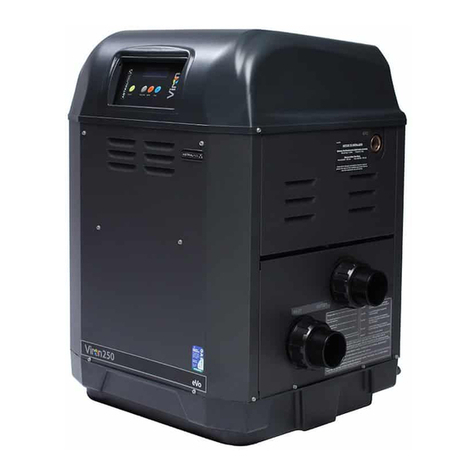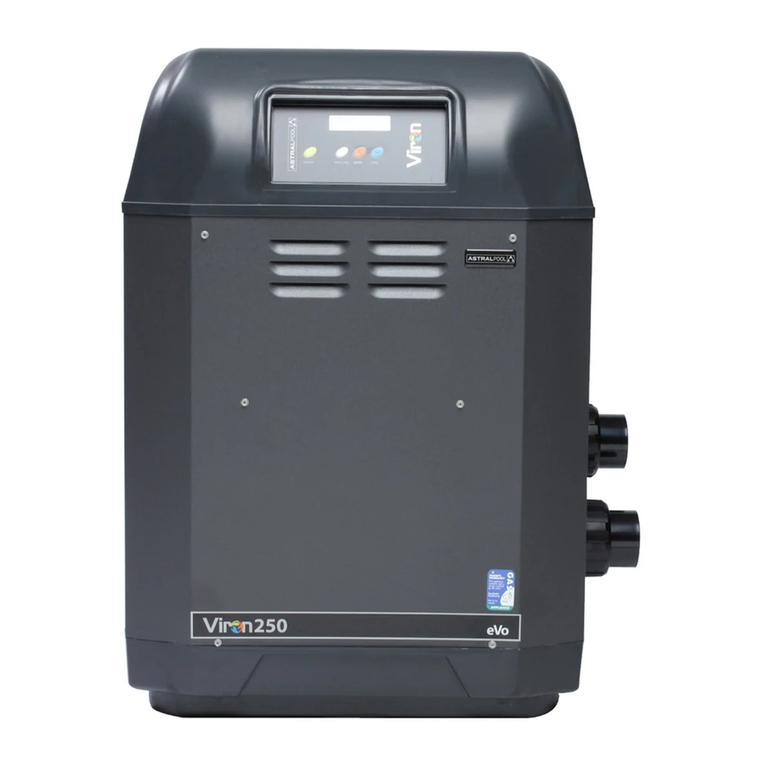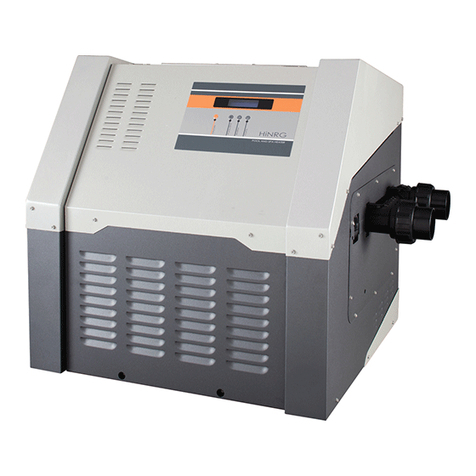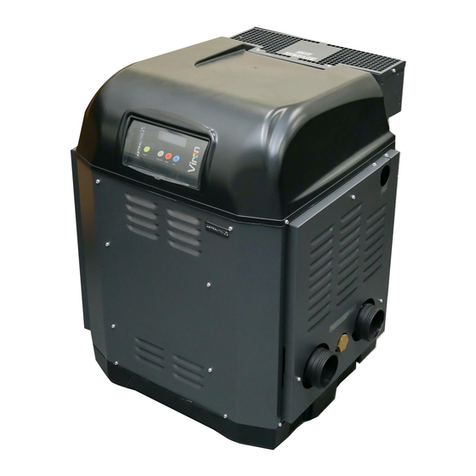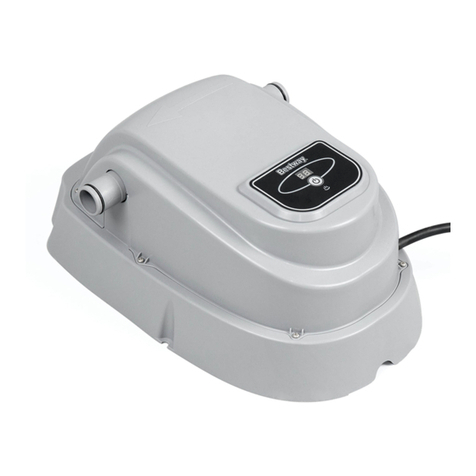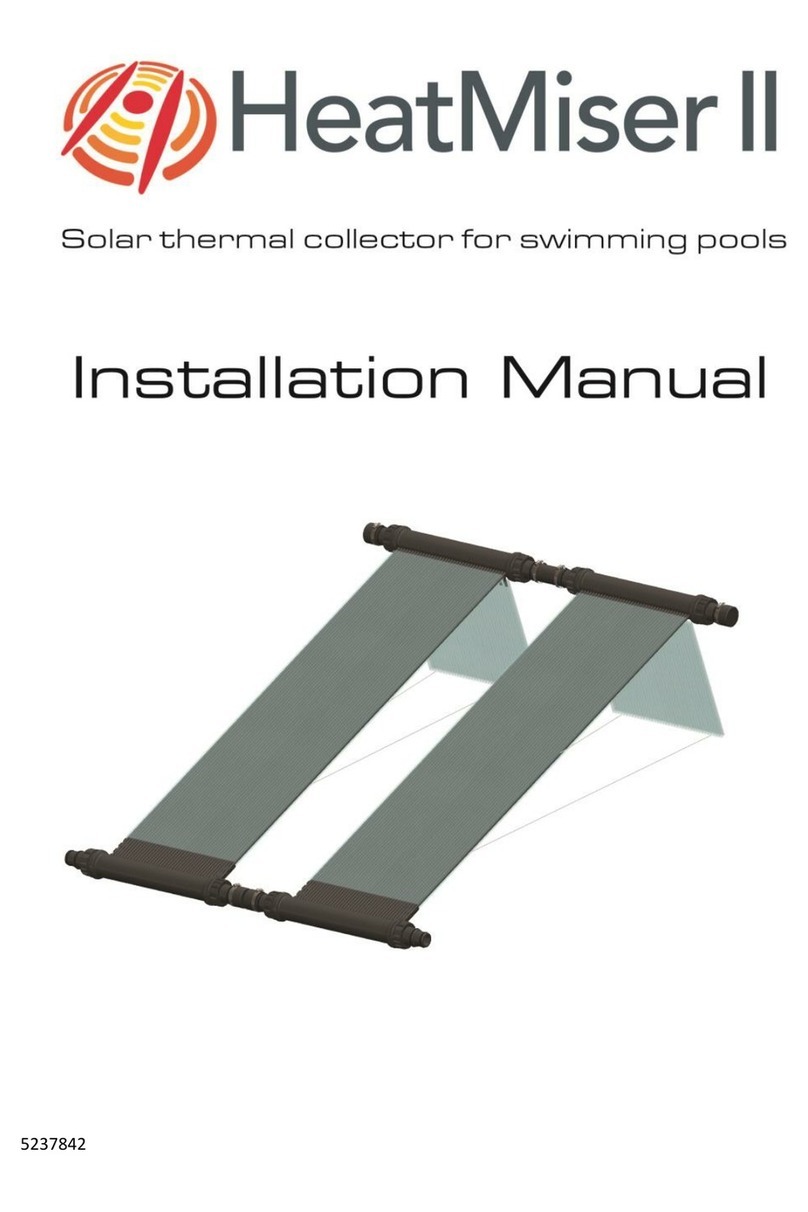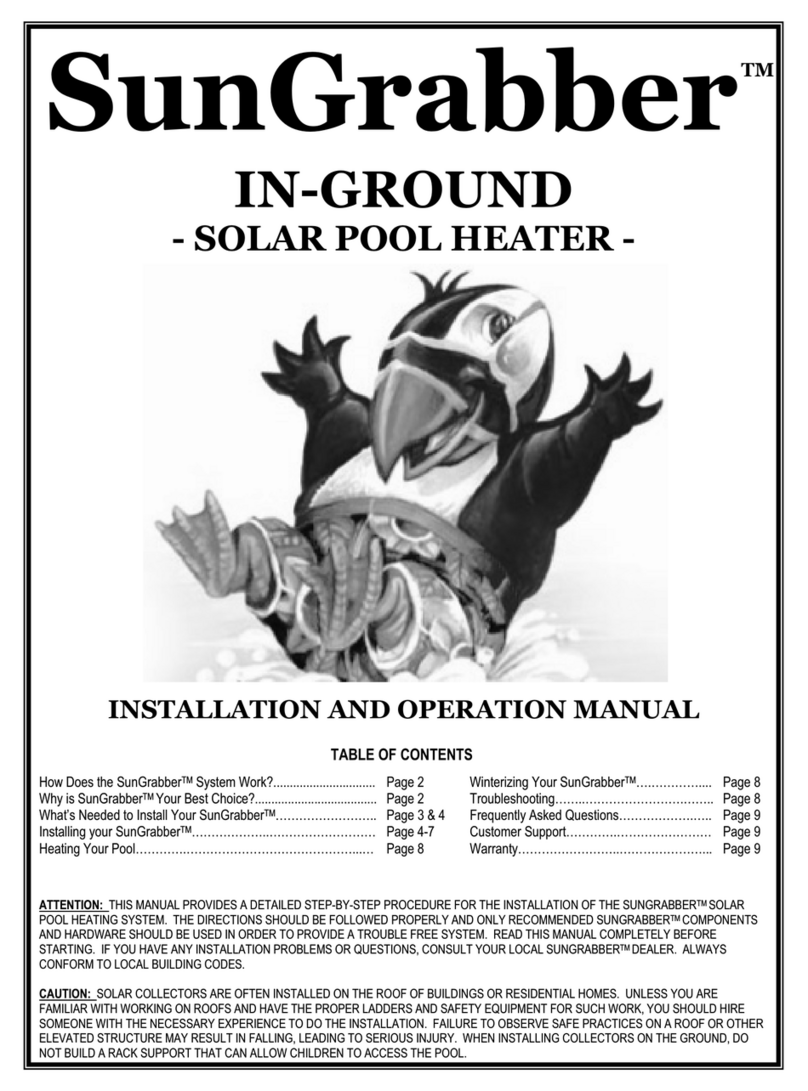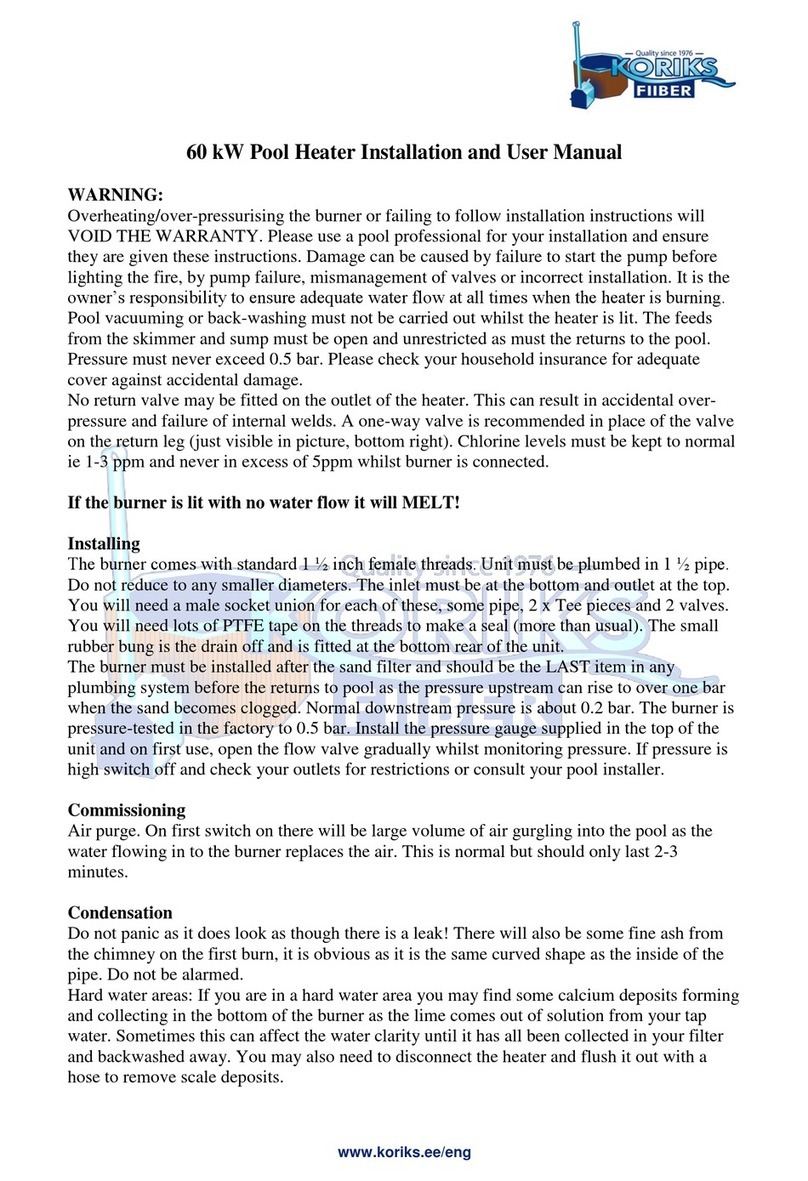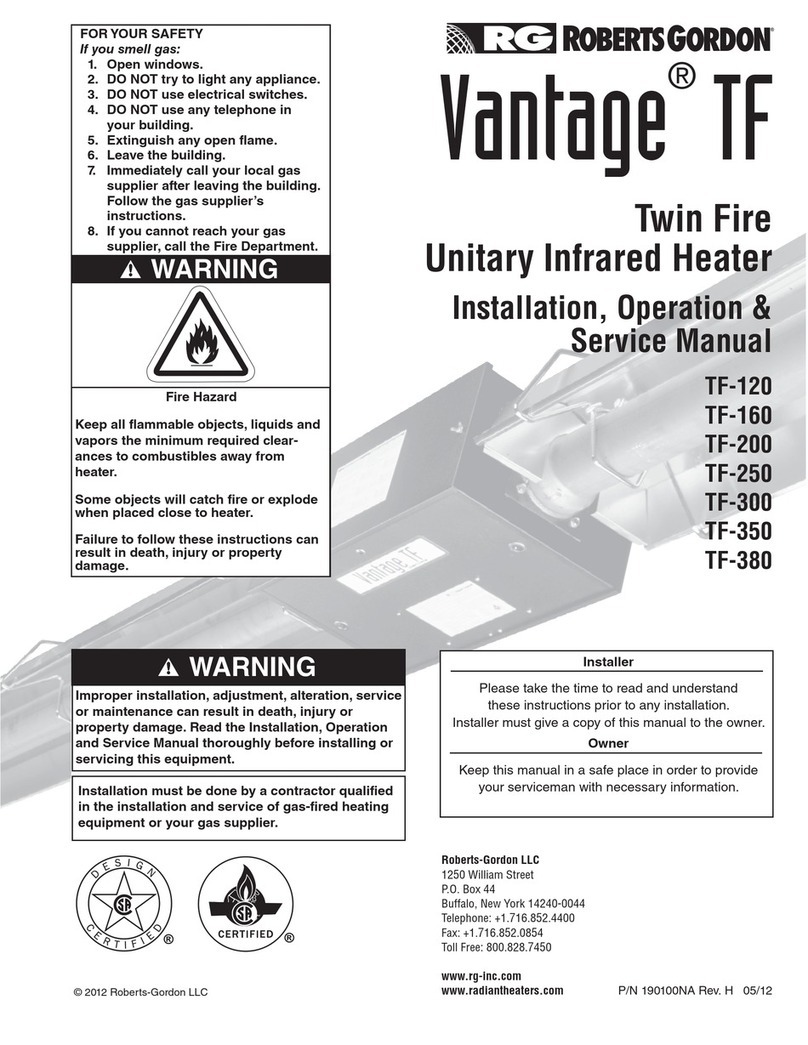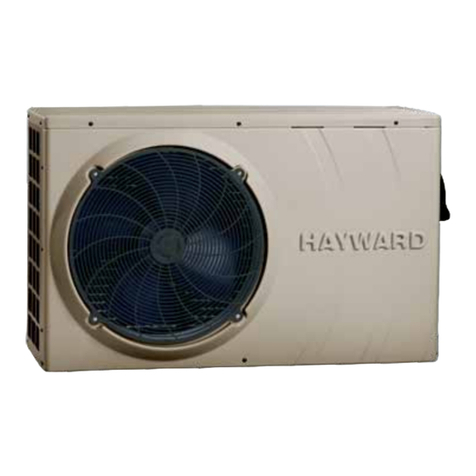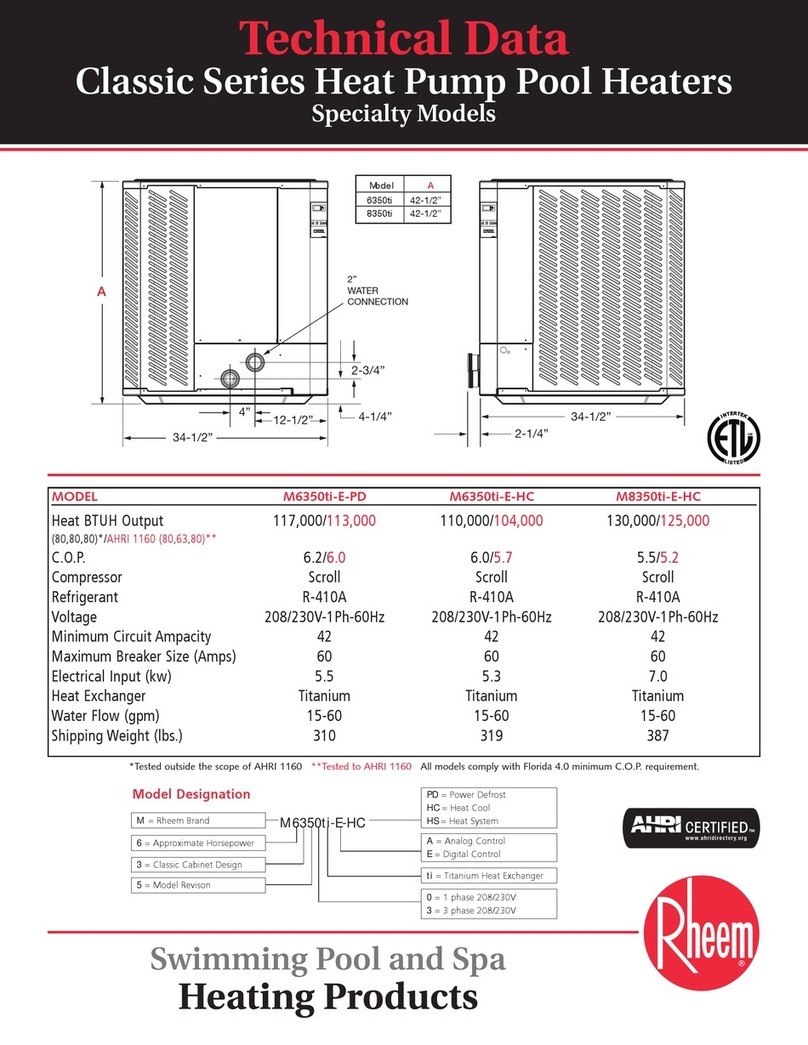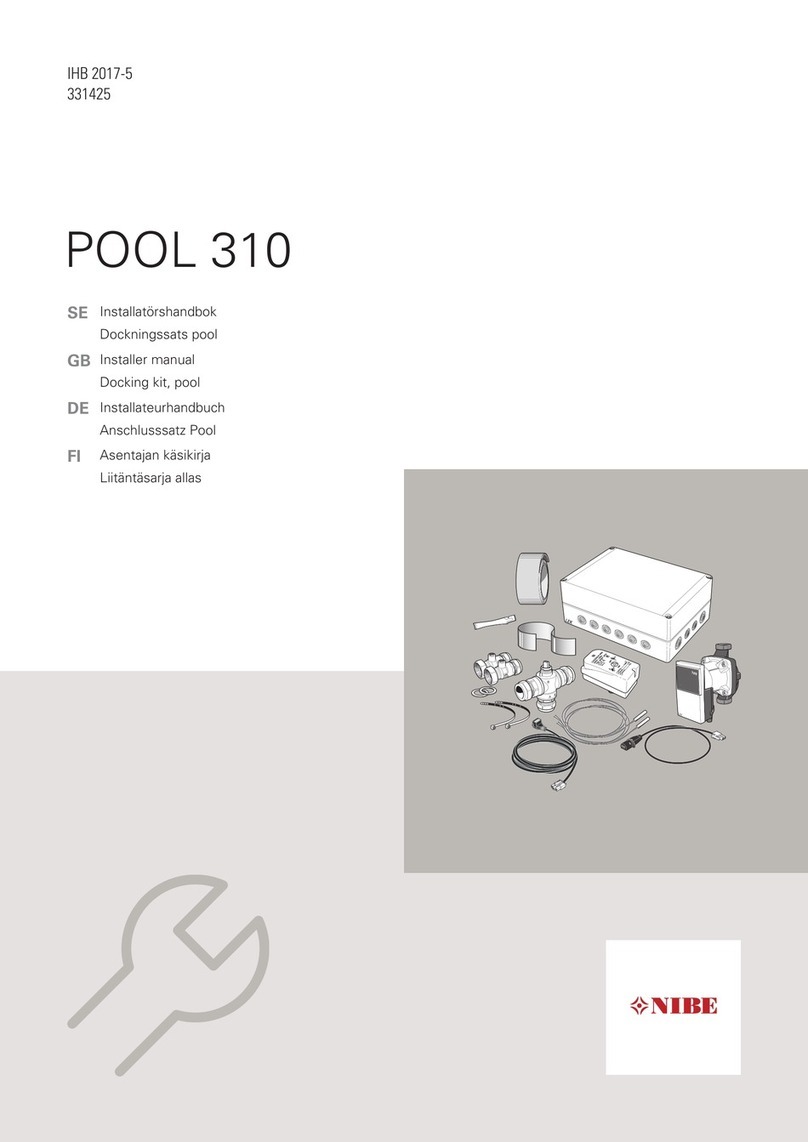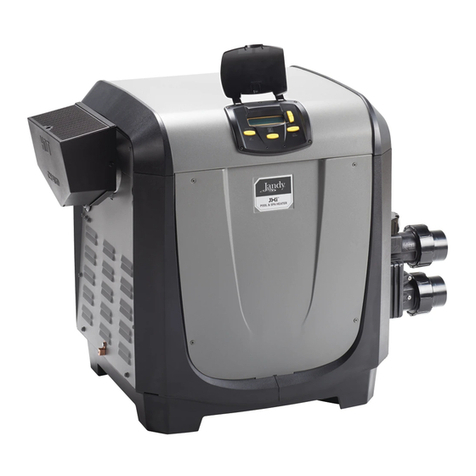
7
ixi gas pool and spa heater Installation Manual
6
ixi gas pool and spa heater Installation Manual
Section 2. General Information
This manual provides installation and operation
instructions for the AstralPool IXI pool and spa gas
heater.
Read the installation and operation instructions
completely before proceeding with the
installation.
2.1 Technical Assistance
Web: www.astralpool.com.au Phone: 1300 186 875
2.2 Warranty
This heater is sold with a limited factory warranty.
Details are included with this heater. For warranty
terms and conditions, please visit:
www.astralpool.com.au.
All warranty issues should be resolved with your
AstralPool dealer or place of purchase. Claims must
include the heater serial number and model (this
information can be found on the rating plate),
installation date, and name of the installer. Shipping
costs are not included in the warranty coverage.
The warranty does NOT cover damage caused by
improper assembly, installation, operation or field
modification. Also, any damage to the heat exchanger
caused by improper water chemistry will NOT be
covered by the warranty.
NOTE: Keep this manual in a safe place for future
reference when inspecting or servicing the heater.
2.3 Consumer Information and Safety
The heater is designed and manufactured to provide
many years of safe and reliable service when
installed, operated, and maintained according to the
information in this manual and the installation codes
referred to throughout. Be sure to read and comply
with all warnings and cautions.
WARNING
Improper installation or maintenance can cause
nausea or asphyxiation from carbon monoxide in ue
gases which could result in severe injury, or death. For
indoor installations, as an additional measure of safety,
AstralPool strongly recommends the installation of
suitable Carbon Monoxide detectors in the vicinity of
this appliance and in any adjacent occupied spaces.
DO NOT MODIFY THIS APPLIANCE.
WARNING
Consult heater operation and installation instructions
for water temperature guidelines before setting
temperature.
• Spa or hot tub water temperature should never
exceed 40°C (104°F). 38°C (100°F) is considered safe for
a healthy adult. Special caution is recommended for
young children.
• The drinking of alcoholic beverages before or
during spa or hot tub use can cause drowsiness which
could lead to unconsciousness, and subsequently
result in drowning.
• Pregnant women take note! Soaking in water
above 38.5°C (102°F) can cause fetal damage during
the rst three (3) months of pregnancy (which could
result in the birth of a brain-damaged or deformed
child). If pregnant women are going to use a spa or
hot tub, they should make sure the water temperature
is below 38°C (100°F) maximum.
• The water temperature should always be checked
with an accurate thermometer before entering a spa
or hot tub. Temperature controls may vary by as much
as 1C°/1F°.
• Persons with a medical history of heart disease,
diabetes, circulatory or blood pressure problems
should consult their physician before using a hot tub
or spa.
• Persons taking any medication which induces
drowsiness (e.g., tranquilizers, antihistamines, or anti-
coagulants) should not use spas or hot tubs.
• Prolonged immersion in hot water can induce
hyperthermia.
• Hyperthermia occurs when the internal body
temperature reaches a level several degrees above the
normal body temperature of 37°C (98.6°F). Symptoms
include dizziness, fainting, drowsiness, lethargy, and
an increase in the internal body temperature. The ef-
fects of hyperthermia include:
• Lack of awareness of impending hazard
• Failure to perceive heat
• Failure to recognize need to leave spa
• Physical inability to leave spa
• Fetal damage in pregnant women
• Unconsciousness resulting in a danger of
drowning
2.4 General Operation Description
The blower draws air and fuel through specially
designed orifices, delivering a precise mixture to
the burner, located inside the sealed combustion
chamber. Water flows through the heat exchanger,
which surrounds the burner transferring the heat to
the water. Exhaust gases are then directed through a
duct where it is vented to the atmosphere.
